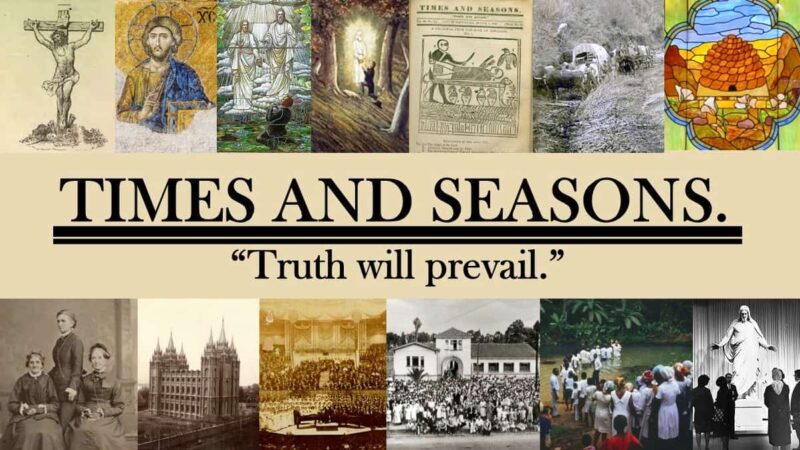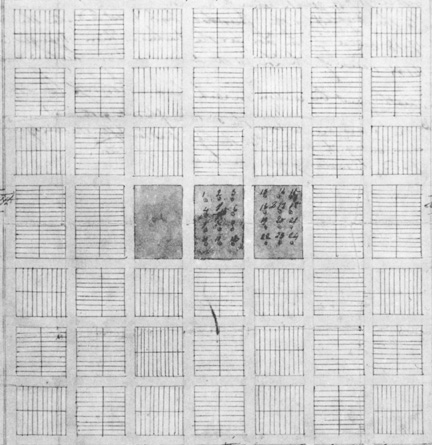Category: Church History
-
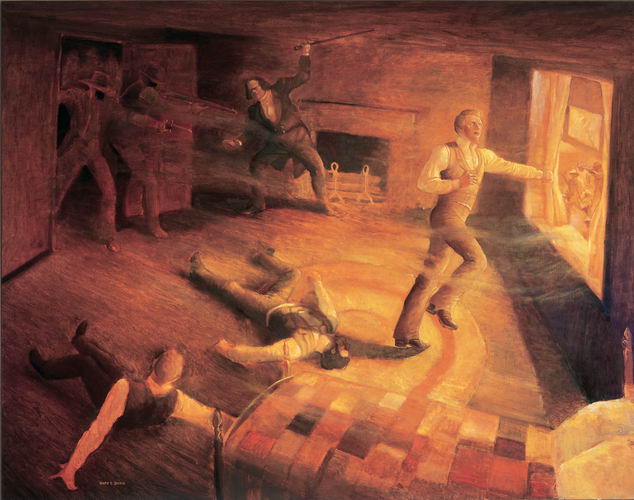
What Did We Lose?
In 70 AD, the Romans capped their extended campaign to crush a Jewish revolt by destroying the magnificent temple in Jerusalem. The Jews lost their temple. Earlier, they had lost political autonomy and the kingship; later, in 132 AD, another Jewish revolt was suppressed and Jews were barred from living in or even entering Jerusalem.…
-
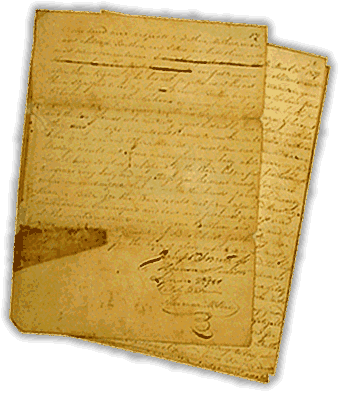
How to write a revelation
I have been working on a paper looking at the Doctrine and Covenants, and my research has me thinking about how the texts of modern revelation were produced. I think that there are a lot of Mormons who assume that the words of the revelations in the Doctrine and Covenants were dictated word for word…
-
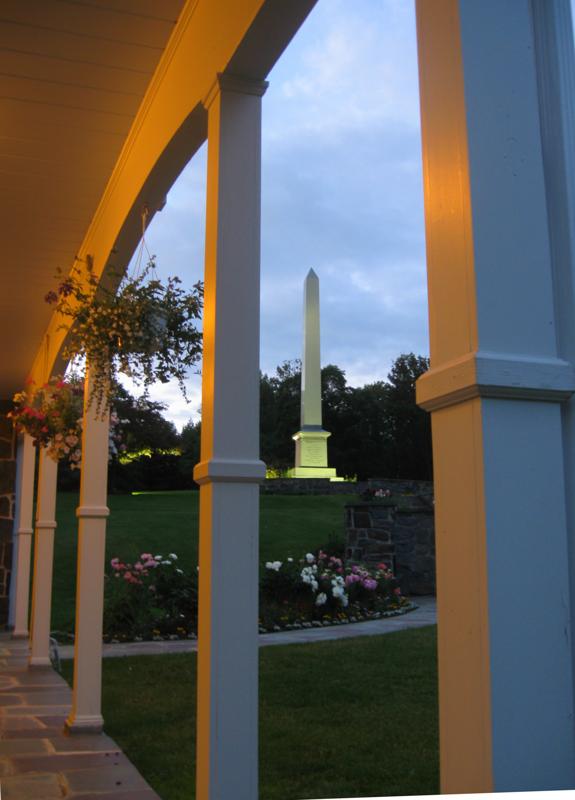
A Mormon Image: Joseph’s Birthplace Memorial At Dusk
“I was born in the year of our Lord one thousand eight hundred and five, on the twenty-third day of December, in the town of Sharon, Windsor county, State of Vermont.” Joseph Smith History 1:3 By Gary Boatright Jr. ___ This picture is part of our ongoing series highlighting Mormon images. Comments to the post…
-
Mormon History, Brazilian Perspective — A Call for Papers
The Brazilian Association for Mormon Studies has issued a call for papers for its 2011 conference, with the theme “Mormon History from a Brazilian Perspective.”
-

Claremont Conference: What Is Mormon Studies?
The Claremont Mormon Studies Student Association is holding its Spring 2010 Conference on April 23 and 24 on the theme What Is Mormon Studies? Transdisciplinary Inquiries into an Emerging Field. The Conference line-up is as follows: Keynote Address Jan Shipps – Indiana University-Purdue University Critical Approaches to Mormon Studies Loyd Ericson – “Where is the…
-
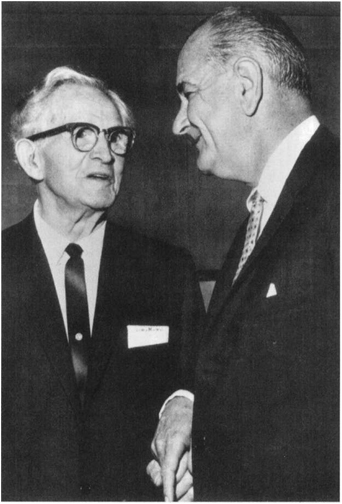
Remembering Stewart Udall
Stewart Udall, U.S. Secretary of the Interior under Kennedy and Johnson and a prominent member of a prolific Mormon political dynasty, passed away Saturday morning at his home in Sante Fe, New Mexico, according to a statement from his son, Senator Tom Udall. Known affectionately as “Stew,” he was ninety years old and the last surviving…
-
Polygamy, Natural Law, and Imperialism
I have been researching Reynolds v. United States (1879), the Supreme Court’s first polygamy case, on and off for several years. For those who are interested, my paper on the topic is now available for download at SSRN. Reynolds is an important case in American constitutional history, because was the first time the U.S. Supreme…
-
What Happened in Nauvoo, Part 3: Polygamy
[See Part 1: Founding and Part 2: Flourishing] Any history of Nauvoo needs to give an account of the secret practice of polygamy between 1841 and 1846. In Nauvoo: A Place of Peace, a People of Promise, Glen Leonard does this in about twenty pages as part of Chapter 13, “Foes Within: The Church of…
-
What Happened in Nauvoo, Part 2: Flourishing
[See Part 1: Founding] This second installment discussing Glen Leonard’s Nauvoo: A Place of Peace, a People of Promise looks at the middle years in Nauvoo through about 1842, covered in the second section of the book (pages 123 to 269).
-
Royal Skousen’s 12 questions — The Critical Text Version
Last month we posted Royal Skousen’s discussion of his work on recovering the earliest version of the Book of Mormon, along with some updates. Unfortunately, that post garnered some annoying formatting problems — mostly due to the new format T&S adopted this year. We’re happy to now present to you mark III of Royal Skousen’s…
-
What Happened in Nauvoo, Part 1: Founding
A lot happened in Nauvoo that doesn’t get covered in Sunday School or the one-volume treatments of LDS history. But Glen Leonard’s Nauvoo: A Place of Peace, a People of Promise tells the story in detail from start to finish.
-
Joseph Smith Papers Book Signing – October 1
This new volume is the second overall in the Joseph Smith Papers, but is the first of the Revelations and Translation series which will provide transcripts of many of the earliest manuscripts of Joseph Smith’s written revelations and translations…
-
12 Questions and a Book by Royal Skousen
5 years ago we published one of my favorite “12 Questions” posts, in which Royal Skousen discussed in some depth what he has learned from his extensive work on the earliest editions of the Book of Mormon. His book, The Book of Mormon: The Earliest Text, is being published in September by Yale University Press…
-
Rough Dawn Breaking
The marble skin of Joseph’s perfectly-muscled chest sparkled like diamonds in the Palmyra sun. Emma stared, captivated by the velvet tones of his voice, the intoxicating scent of his tousled bronze hair. “You should stay away from me,” he had warned her moodily. “I’m too dangerous.” But he couldn’t seem to stay away from her…
-
Van Camp’s Pork & Beans
A 1904 magazine advertisement for Van Camp’s Pork and Beans features a photograph of the Stonewall Andrew Jackson equestrian statue in New Orleans. Two cartoon children dressed in Dutch costume gaze at the monument, above this verse:
-
The Evolution of Excommunication
I recently went through every version of the Church Handbook of Instructions, looking at what they have to say about the operation of church courts and how it has changed over time.
-
Edits have never been so cool
This month’s Ensign features a ground-breaking discussion of the nuances in the Doctrine and Covenants creation process — and it’s all about edits, like you’ve never seen them before. Elder Marlin K. Jensen of the Seventy, who is the current church historian, writes at some length about the general process, including the fact that there…
-
Political Sentiments and Religious Sentiments
My own politics ocillate between liberalism (in the grand historical sense) and conservatism.
-
12 Questions for Marvin Perkins, Part Four
Here is the last installment of our 12 Questions with Marvin Perkins, comprised of Brother Perkins’ responses to our last two questions. We’d like to thank Brother Perkins for the time and effort he’s put in to giving us a set of very substantive and thought-provoking responses.
-
12 Questions for Marvin Perkins, Part Three
Here is Part Three of our 12 Questions with Marvin Perkins, comprised of Brother Perkins’ responses to our next five questions. See Parts One, Two, and Four for our introduction of Brother Perkins and his responses to our other questions.
-
12 Questions for Marvin Perkins, Part Two
Here is Part Two of our 12 Questions with Marvin Perkins, comprised of Brother Perkins’ responses to our next four questions. See Parts One, Three and Four for our introduction of Brother Perkins and his responses to our other questions.
-
12 Questions for Marvin Perkins, Part One
Marvin Perkins has graciously agreed to answer a few questions from Times & Seasons. Brother Perkins is a Latter-day Saint music producer who is currently the Public Affairs Co-chair for the Genesis Group and who has worked to nurture understanding between African Americans and Latter-day Saints and attack misconceptions. As part of this effort, he…
-
History and Identity
I recently read a short essay by Eric Hobsbawm, “Identity History Is Not Enough.” I came across it in his book On History, a collection of essays, but fortunately for you it is available online at the above link (except for the last page, for some reason). Mormonism is not mentioned, but the discussion seems…
-
Mormons as Minorities
Today I gave a presentation to the William & Mary chapter of the J. Reuben Clark Society on “Mormons as Minorities” in which I discuss some of my research on Mormon legal and political history (and other stuff). If you are interested, you can listen to the presentation here.
-
“Aviva Levine”: The God of Her Fathers
”Aviva Levine” is the pseudonym used by a woman who told of her conversion to the Church almost 50 years ago. Because I do not know her real name, I cannot update the story she told in 1964, and can only hope that her new life continued as it began. [UPDATE: Justin identifies her as…
-
What I Learned about Mormon Courts (and the Writing of Mormon History)
For those who are interested in Mormon legal history, my article “Preaching to the Court House and Judging in the Temple” was just published in the most recent issue of the BYU Law Review. (You can download a copy of the article here.) This article provides my own take on the rise and fall of…
-
I Have a Question, 1891
These questions and answers are from the Juvenile Instructor of 1891. Some of them appear in columns headed “Editorial Thoughts,” some of which are explicitly signed The Editor, marking them as the work of George Q. Cannon.
